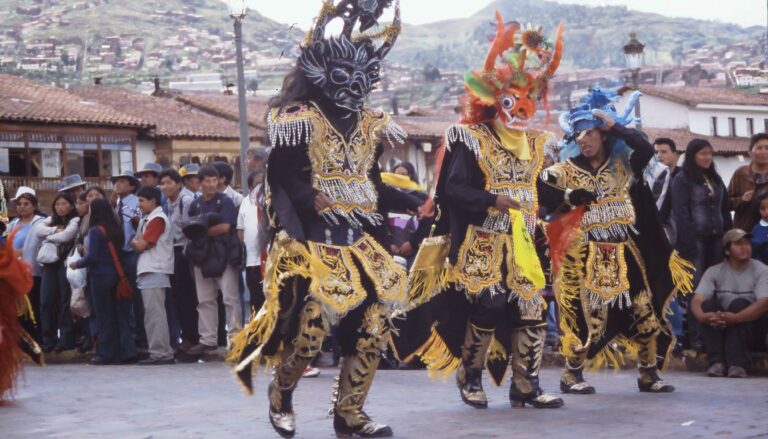Te Reo Maori, the language of New Zealand’s indigenous Maori people, is more than just a means of communication. It’s a living treasure, a carrier of culture, and a key to understanding the Maori worldview. The story of Te Reo Maori is one of resilience, revival, and cultural pride.
Te Reo Maori means “the Maori language” in the language itself. It’s a Polynesian language that has been spoken in New Zealand for over 700 years. For the Maori people, Te Reo is not just a language – it’s a vital part of their identity and culture. It carries their history, traditions, and ways of thinking about the world.
The journey of Te Reo Maori over the past two centuries has been a challenging one. Once the primary language of New Zealand, it faced near-extinction due to colonization and suppression. However, through dedicated efforts and cultural resurgence, Te Reo Maori has experienced a remarkable revival in recent decades.
Today, Te Reo Maori is recognized as an official language of New Zealand, alongside English and New Zealand Sign Language. Its revival is not just important for the Maori people, but for all New Zealanders. It represents a commitment to cultural diversity, reconciliation, and the preservation of indigenous knowledge.
As we explore the renaissance of Te Reo Maori, we’ll uncover a story of language loss and reclamation, of cultural suppression and resurgence, and of a nation coming to terms with its bicultural identity. This journey offers valuable insights into the importance of language preservation and the power of community-driven cultural revival.
Table of Contents
The Historical Context: Te Reo Maori’s Decline
To understand the significance of Te Reo Maori’s revival, we must first look at its history of decline. Before European contact, Te Reo Maori was the primary language of Aotearoa (the Maori name for New Zealand). It was a fully developed language, rich in vocabulary and capable of expressing complex ideas.
The arrival of European settlers in the 19th century marked the beginning of a drastic change for Te Reo Maori. As British colonization progressed, English quickly became the dominant language in New Zealand. This shift wasn’t just a natural evolution – it was often enforced through official policies and social pressures.
One of the most damaging policies was the Native Schools Act of 1867. This law established a national school system for Maori children, but with a catch: instruction was to be in English only. Many Maori children were punished for speaking their native language at school. This led to a generation of Maori people who were discouraged from using their own language.
The impact of urbanization in the 20th century further accelerated the decline of Te Reo Maori. As more Maori people moved to cities for work, they were often separated from their traditional communities where the language was spoken. In urban environments, English was necessary for employment and daily life, pushing Te Reo Maori further to the margins.
By the 1970s, the situation had become critical. Surveys showed that only about 20% of Maori people could speak Te Reo Maori fluently, and most of these speakers were elderly. The language that had been spoken in New Zealand for centuries was at risk of dying out within a generation.
This near-loss of Te Reo Maori wasn’t just a linguistic issue – it represented a broader loss of cultural knowledge and identity. Many Maori people felt disconnected from their heritage, unable to fully participate in traditional ceremonies or understand the deeper meanings of their cultural practices.
The decline of Te Reo Maori serves as a stark reminder of the impact of colonization on indigenous cultures. However, it also sets the stage for the remarkable story of revival and reclamation that was to follow.
The Turning Point: Maori Language Activism
The 1970s marked a turning point for Te Reo Maori. This decade saw the beginning of what’s often called the “Maori Renaissance,” a period of renewed pride in Maori culture and increased activism for Maori rights. Language revival was at the heart of this cultural resurgence.
Key figures emerged who championed the cause of Te Reo Maori. People like Hana Te Hemara, Syd Jackson, and Ng? Tamatoa group became vocal advocates for the language. They argued that the survival of Te Reo Maori was crucial for maintaining Maori cultural identity and rights.
One of the most significant moments in this period was the presentation of the Maori Language Petition to Parliament in 1972. This petition, signed by over 30,000 people, called for Te Reo Maori to be taught in schools. It was a clear message that many New Zealanders, both Maori and non-Maori, saw value in preserving and promoting the language.
Grassroots initiatives began to spring up around the country. Maori communities started language learning groups, often led by elders who were among the last fluent speakers. These informal classes laid the groundwork for more structured language programs that would follow.
The activism of this period wasn’t just about preserving Te Reo Maori – it was about reclaiming it. Many Maori people who had grown up without the language began to learn it as adults. This was often an emotional journey, connecting them with their cultural heritage in a profound way.
The efforts of these activists began to bear fruit. In 1975, the first Maori Language Week was held, an event that continues annually to this day. In 1976, the first bilingual school was established in Ruatoki, marking the beginning of a new era in Maori language education.
Perhaps most importantly, this period of activism changed attitudes towards Te Reo Maori. It went from being seen as a relic of the past to a living language with a place in modern New Zealand. This shift in perception was crucial for the policy changes and government support that would follow.
The story of Maori language activism is a powerful example of how dedicated individuals and communities can spark significant cultural change. It set the stage for the official recognition and support that Te Reo Maori would receive in the coming years.
Government Initiatives: The Maori Language Act and Beyond
The grassroots activism of the 1970s and early 1980s eventually led to official recognition and support for Te Reo Maori. This marked a significant shift in government policy, from the earlier suppression of the language to active efforts for its preservation and promotion.
A major milestone came in 1987 with the passing of the Maori Language Act. This legislation declared Te Reo Maori an official language of New Zealand, alongside English. While this might seem like a symbolic gesture, it had real, practical implications. It meant that Maori people now had the right to speak Te Reo Maori in legal proceedings, with an interpreter provided if necessary.
The 1987 Act also established Te Taura Whiri i te Reo Maori (The Maori Language Commission). This organization was given the task of promoting Te Reo Maori as a living language and as an ordinary means of communication. The Commission has since played a crucial role in developing Maori language resources, setting standards for written Maori, and advising the government on language policies.
In the years that followed, several other important initiatives were launched:
- In 1989, the Education Amendment Act recognized Kura Kaupapa Maori (Maori-medium schools) as a distinct type of state school.
- The 2003 Maori Television Service Act led to the establishment of Maori Television, providing a platform for Maori language content.
- In 2016, a new Maori Language Act was passed, which set up Te Matawai, a new organization to lead revitalization efforts at a community level.
These government initiatives have been backed by significant funding. Millions of dollars have been invested in Maori language education, media, and community programs. This financial support has been crucial in turning policy goals into practical realities.
The government has also worked to incorporate Te Reo Maori into public life. Many government departments now have Maori names alongside their English ones. Official documents are often produced in both languages. Even New Zealand passports now include Maori as well as English text.
These government efforts represent a dramatic turnaround from the policies of the past. They’ve provided official recognition and resources that have been vital to the revival of Te Reo Maori. However, as we’ll see in later sections, the journey of language revitalization involves much more than just official policy – it’s a community effort that touches all aspects of society.
Education: The Role of Kohanga Reo and Kura Kaupapa Maori
Education has been at the forefront of Te Reo Maori revival efforts. Two initiatives in particular have played crucial roles: Kohanga Reo and Kura Kaupapa Maori. These educational models have not only helped to increase the number of Te Reo Maori speakers but have also fostered a sense of cultural pride and identity among Maori youth.
Kohanga Reo, which means “language nest” in Maori, began in 1982. These are preschools where children are immersed in Te Reo Maori from an early age. The idea is simple but powerful: surround young children with the language, and they will absorb it naturally. Kohanga Reo goes beyond just language teaching – it’s about immersing children in Maori culture and values.
The success of Kohanga Reo led to the establishment of Kura Kaupapa Maori in 1985. These are primary and secondary schools where Te Reo Maori is the main language of instruction. Kura Kaupapa Maori follow a curriculum called Te Aho Matua, which is based on Maori philosophies of education and child development.
These Maori-medium education options have had a significant impact:
- They’ve created new generations of fluent Te Reo Maori speakers.
- They’ve helped to develop and standardize modern Maori vocabulary for academic subjects.
- They’ve provided a model for indigenous language education that has been studied around the world.
Beyond these specialized schools, efforts have been made to integrate Te Reo Maori into mainstream education as well. Many regular schools now offer Te Reo Maori as a subject, and some have bilingual units. The New Zealand Curriculum recognizes Te Reo Maori as an official language, and all schools are encouraged to include Maori language and culture in their programs.
At the tertiary level, universities across New Zealand offer courses in Te Reo Maori, ranging from beginner classes to advanced linguistic study. Some universities, like the University of Waikato, even offer entire degree programs taught in Te Reo Maori.
The impact of these educational initiatives has been substantial. They’ve not only increased the number of Te Reo Maori speakers but have also raised the status of the language. For many young Maori, being bilingual in Te Reo Maori and English is now seen as an asset and a source of pride.
However, challenges remain. Not all Maori children have access to Maori-medium education, and there’s an ongoing need for more Te Reo Maori teachers. Despite these challenges, the role of education in the revival of Te Reo Maori stands as a powerful example of how language can be revitalized through focused, community-driven efforts.
Media and Technology: Te Reo in the Digital Age
In our increasingly digital world, the presence of a language in media and technology can be crucial to its survival and growth. Recognizing this, supporters of Te Reo Maori have worked hard to ensure the language has a strong presence across various media platforms and technologies.
One of the most significant developments was the launch of Maori Television in 2004. This national TV channel broadcasts primarily in Te Reo Maori, offering a mix of news, entertainment, and cultural programming. It’s played a crucial role in normalizing the use of Te Reo Maori in everyday life and providing a platform for Maori stories and perspectives.
Radio has also been an important medium for Te Reo Maori. There are now over 20 iwi (tribal) radio stations broadcasting in Te Reo Maori and English. These stations not only help preserve the language but also maintain distinct tribal dialects and traditions.
The internet and social media have opened up new opportunities for Te Reo Maori. There are now numerous websites, apps, and online courses dedicated to teaching and promoting the language. Social media platforms like Facebook and Twitter have Te Reo Maori language options, allowing users to navigate these sites in the Maori language.
Some innovative tech projects include:
- The Kupu app, which uses AI to help users learn Te Reo Maori words for objects they photograph.
- The Microsoft Translator app, which now includes Te Reo Maori as one of its languages.
- Online dictionaries and language resources like Maori Dictionary (maoridictionary.co.nz).
Video games are another area where Te Reo Maori is making inroads. Some popular games now offer Te Reo Maori language options, introducing the language to new audiences.
These technological advances serve multiple purposes:
- They make learning Te Reo Maori more accessible, especially for younger generations.
- They help integrate the language into daily life and modern contexts.
- They raise the profile of Te Reo Maori, showing it as a living, adaptable language.
The presence of Te Reo Maori in media and technology is not just about preservation – it’s about evolution. It shows how an indigenous language can adapt to the modern world while maintaining its cultural essence. As technology continues to advance, it’s likely to play an increasingly important role in the ongoing revival and growth of Te Reo Maori.
Challenges in Language Revival
While the revival of Te Reo Maori has made significant progress, it hasn’t been without its challenges. Understanding these obstacles is crucial for continuing the language’s growth and addressing ongoing issues.
One of the biggest challenges is intergenerational language loss. Many Maori adults today grew up in a time when the language wasn’t widely spoken or taught. This means there’s often a gap between grandparents who might speak the language and grandchildren learning it in school, with a middle generation that missed out. Bridging this gap and creating opportunities for family-wide language learning is an ongoing challenge.
Limited resources and funding can also be a hurdle. While there has been significant government investment in Te Reo Maori, the demand for resources – especially qualified teachers – often outstrips supply. This can limit the expansion of Maori-medium education and other language programs.
Another challenge is balancing Te Reo Maori with English in a predominantly English-speaking society. For many learners, finding opportunities to use Te Reo Maori in everyday life can be difficult, especially outside of specific Maori cultural contexts. This can slow down the learning process and make it harder to achieve true fluency.
There are also ongoing issues with misconceptions and resistance. Some people question the value of learning Te Reo Maori, arguing that English is more “useful” in a global context. Others worry that promoting Te Reo Maori might somehow disadvantage English speakers. Addressing these misconceptions and promoting the benefits of bilingualism remains an ongoing task.
The urban-rural divide presents another challenge. In rural areas with larger Maori populations, there are often more opportunities to use and hear Te Reo Maori. In urban areas, where the majority of New Zealand’s population lives, these opportunities can be more limited. Finding ways to create Maori language environments in cities is an important area of focus.
Despite these challenges, the revival of Te Reo Maori has made remarkable progress. Each obstacle has spurred innovative solutions and strengthened the commitment of language advocates. The ongoing nature of these challenges highlights that language revival is not a one-time event, but a continuous process requiring sustained effort and adaptation.
Success Stories: Fluent Speakers and Cultural Pride
Amidst the challenges, there are many inspiring success stories in the revival of Te Reo Maori. These stories not only showcase the progress made but also illustrate the profound impact that reclaiming the language can have on individuals and communities.
One of the most heartening trends is the growth in Te Reo Maori speakers. According to the 2018 New Zealand census, the number of people who can hold a conversation in Te Reo Maori increased to 185,955, up from 131,613 in 2013. This growth is particularly significant among younger Maori, many of whom have benefited from Maori-medium education.
Personal stories of language reclamation are especially powerful. Many Maori adults who didn’t grow up speaking Te Reo have embarked on the journey of learning their ancestral language. For example, Stacey Morrison, a well-known New Zealand broadcaster, learned Te Reo Maori as an adult and has become a vocal advocate for the language. Her story, shared in books and media, has inspired many others to start their own language learning journeys.
The impact of fluency on cultural identity and pride cannot be overstated. Many learners report that connecting with Te Reo Maori has deepened their understanding of Maori culture and strengthened their sense of identity. This renewed cultural confidence often extends beyond language, inspiring engagement with other aspects of Maori culture and tradition.
Community-led language initiatives have also seen great success. For instance, the “Te Reo o te Kainga” (Language of the Home) program encourages families to use Te Reo Maori in everyday life. This grassroots approach has helped create new domains for the language outside of formal education settings.
Another success story is the increasing visibility of Te Reo Maori in public life. It’s now common to hear Te Reo Maori used in official ceremonies, on national media, and even in Parliament. This normalization of the language in public spaces represents a significant shift from just a few decades ago.
The success of Te Reo Maori revival efforts has also had a positive impact on New Zealand’s national identity. Many New Zealanders, including those of non-Maori descent, now see Te Reo Maori as an integral part of what makes their country unique. This broader acceptance and appreciation of the language contribute to a more inclusive national culture.
These success stories serve as powerful motivation for ongoing revival efforts. They demonstrate that with dedication, community support, and effective strategies, it is possible to bring an endangered language back from the brink and integrate it into modern life.
Te Reo Maori in Popular Culture
The revival of Te Reo Maori isn’t confined to classrooms and official settings. It has increasingly found its way into popular culture, reflecting and reinforcing its growing acceptance in New Zealand society.
Music has been a particularly effective vehicle for promoting Te Reo Maori. Artists like Maisey Rika, Rob Ruha, and Alien Weaponry have gained popularity by creating contemporary music in Te Reo Maori. These artists span genres from traditional Maori music to pop and even heavy metal, showcasing the versatility of the language and appealing to diverse audiences.
In the world of sports, Te Reo Maori has a prominent place. The New Zealand national rugby team, the All Blacks, famously perform a haka (a traditional Maori challenge) before their matches, which has helped popularize Maori culture and language internationally. Many sports teams in New Zealand have Maori names or incorporate Te Reo Maori into their branding and supporter chants.
Television and film have also embraced Te Reo Maori. Beyond dedicated Maori language programming, mainstream shows increasingly incorporate Te Reo Maori words and phrases. Films like “Whale Rider” and “Boy” have brought Maori stories and language to international audiences.
The incorporation of Maori words into New Zealand English is another interesting phenomenon. Words like “kia ora” (hello), “whanau” (family), and “kai” (food) are now commonly used by New Zealanders of all backgrounds. This integration of Te Reo Maori into everyday speech reflects its growing influence on New Zealand’s linguistic landscape.
Te Reo Maori is also making its mark in literature and the arts. There’s a growing body of literature written in Te Reo Maori, including both original works and translations of international classics. Art exhibitions and theater productions often incorporate Te Reo Maori, reflecting its importance in contemporary New Zealand culture.
The use of Te Reo Maori in popular culture serves several important functions:
- It normalizes the language, making it a part of everyday life.
- It creates new contexts for language use, helping learners practice outside formal settings.
- It demonstrates the relevance of Te Reo Maori in modern contexts.
- It fosters pride in Maori culture among Maori people and appreciation among non-Maori New Zealanders.
The presence of Te Reo Maori in popular culture is both a result of and a contributor to its revival. As more people learn and use the language, it naturally finds its way into various aspects of culture. In turn, this cultural presence inspires more people to engage with the language, creating a positive feedback loop that supports ongoing revival efforts.
The Global Context: Te Reo Maori and Indigenous Language Revival Worldwide
The revival of Te Reo Maori is not an isolated phenomenon. It’s part of a global movement of indigenous language revitalization that has gained momentum in recent decades. Comparing Te Reo Maori’s journey with other language revival efforts provides valuable context and insights.
One notable comparison is with the Hawaiian language. Like Te Reo Maori, Hawaiian faced severe decline due to colonization but has experienced a resurgence since the 1970s. The Hawaiian immersion schools, or Punana Leo, were actually inspired by New Zealand’s Kohanga Reo. Both languages have seen success with the “language nest” model of early childhood immersion.
In Wales, efforts to revive the Welsh language have some parallels with Te Reo Maori. Welsh is now an official language in Wales, is taught in schools, and has a presence in media and government. The Welsh example shows how a minority language can coexist with a dominant language (English) in a bilingual society.
The Maori language revival has also drawn international attention and recognition. UNESCO has highlighted Te Reo Maori as a successful example of language revitalization. This international recognition not only validates the efforts of Maori language advocates but also provides a model for other indigenous communities around the world.
Collaboration and knowledge-sharing between indigenous communities have been important aspects of language revival efforts. Maori language experts have shared their experiences with other indigenous groups, and in turn, have learned from others’ successes and challenges. This global network of indigenous language advocates has strengthened the overall movement for linguistic diversity.
The Te Reo Maori revival contributes to a growing awareness of the importance of linguistic diversity worldwide. Languages are not just communication tools; they embody unique ways of seeing and understanding the world. As the world grapples with global challenges, the preservation of diverse languages and the knowledge systems they contain becomes increasingly important.
The success of Te Reo Maori, while still ongoing, offers hope to other endangered language communities. It demonstrates that with community commitment, supportive policies, and innovative approaches, it is possible to reverse language decline and create new generations of speakers.
At the same time, the global context reminds us that language revival is a long-term process that requires ongoing effort and adaptation. The journey of Te Reo Maori, with its successes and ongoing challenges, continues to provide valuable lessons for language revitalization efforts worldwide.
The Future of Te Reo Maori
As we look to the future, the prospects for Te Reo Maori appear bright, although not without ongoing challenges. Current trends and initiatives provide a glimpse into what the coming years might hold for this revitalized language.
One promising trend is the increasing number of young Te Reo Maori speakers. As more children go through Maori-medium education or learn the language in mainstream schools, a new generation of fluent speakers is emerging. These young people are likely to play a crucial role in the language’s future, using Te Reo Maori in new and innovative ways.
Technology is expected to continue playing a significant role in language preservation and learning. We’re likely to see more advanced language learning apps, perhaps incorporating virtual reality or artificial intelligence. There’s also potential for more Te Reo Maori content in digital media, from social media to streaming services.
Ongoing initiatives and future plans include:
- Expanding Maori-medium education options to meet growing demand.
- Increasing the integration of Te Reo Maori in professional settings, including government and business.
- Developing more advanced resources for learners to achieve higher levels of fluency.
- Continued efforts to document and preserve regional dialects and specialized vocabulary.
The role of young people in carrying the language forward cannot be overstated. As they enter the workforce and take on leadership roles, they have the potential to normalize the use of Te Reo Maori in a wide range of contexts. Their comfort with both Te Reo Maori and digital technology positions them well to innovate in language preservation and promotion.
However, potential challenges remain. These include:
- Ensuring that the growth of Te Reo Maori continues beyond the current generation of school-age learners.
- Addressing ongoing resource constraints, particularly in teacher training.
- Balancing standardization of the language with preservation of tribal dialects and traditions.
- Maintaining the relevance of Te Reo Maori in an increasingly globalized, English-dominated world.
Despite these challenges, the overall trajectory for Te Reo Maori looks positive. The language has come a long way from the brink of extinction, and each new generation of speakers brings fresh energy and ideas to its revitalization.
The future of Te Reo Maori is not just about the language itself, but about the broader impact on New Zealand society. As Te Reo Maori becomes more widely spoken and understood, it has the potential to shape New Zealand’s national identity, fostering a truly bicultural society that honors both its Maori heritage and its multicultural present.
Conclusion: The Ongoing Journey of Language Revitalization
The story of Te Reo Maori’s revival is a testament to the power of cultural resilience and community determination. From the brink of extinction, Te Reo Maori has reemerged as a living, growing language, integral to New Zealand’s national identity.
This journey has been marked by significant milestones: from the grassroots activism of the 1970s to the establishment of Kohanga Reo and Kura Kaupapa Maori, from official recognition as a national language to its increasing presence in media and popular culture. Each step has contributed to the language’s revival and to a broader recognition of the value of Maori culture in New Zealand society.
The impact of Te Reo Maori’s revival extends far beyond linguistics. It has played a crucial role in the broader resurgence of Maori culture, contributing to a renewed sense of pride and identity among Maori people. For many, learning Te Reo Maori has been a journey of personal and cultural reconnection.
Moreover, the revival of Te Reo Maori has contributed to New Zealand’s evolving national identity. The increasing visibility and use of the language, even among non-Maori New Zealanders, reflects a growing appreciation for the country’s indigenous heritage and a move towards a more inclusive, bicultural society.
However, the work of language revitalization is never truly complete. Challenges remain, and new ones will likely emerge. The ongoing vitality of Te Reo Maori will depend on continued commitment from Maori communities, supportive government policies, and the engagement of New Zealand society as a whole.
The journey of Te Reo Maori offers valuable lessons for language revitalization efforts worldwide. It demonstrates the importance of community-led initiatives, the role of education in language transmission, and the potential for technology to support language learning and use.
As Te Reo Maori continues to grow and evolve, it stands as a powerful example of how a language can be brought back from the edge of extinction to become a vibrant part of contemporary life. It reminds us that languages are not just tools for communication, but living embodiments of culture, history, and ways of seeing the world.
The revival of Te Reo Maori is more than just a linguistic success story – it’s a journey of cultural reclamation, national reconciliation, and the affirmation of indigenous rights. As this journey continues, Te Reo Maori stands poised to play an ever more significant role in shaping the future of Aotearoa New Zealand.
Discover the must-visit cultural destinations of Māori culture













